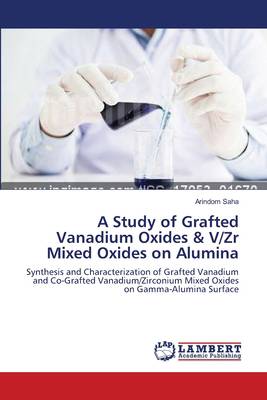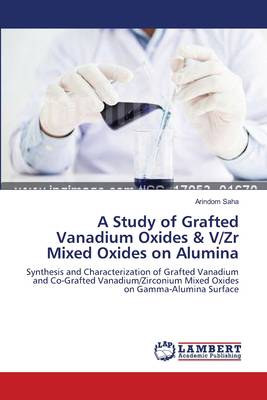
Door een staking bij bpost kan je online bestelling op dit moment iets langer onderweg zijn dan voorzien. Dringend iets nodig? Onze winkels ontvangen jou met open armen!
- Afhalen na 1 uur in een winkel met voorraad
- Gratis thuislevering in België vanaf € 30
- Ruim aanbod met 7 miljoen producten
Door een staking bij bpost kan je online bestelling op dit moment iets langer onderweg zijn dan voorzien. Dringend iets nodig? Onze winkels ontvangen jou met open armen!
- Afhalen na 1 uur in een winkel met voorraad
- Gratis thuislevering in België vanaf € 30
- Ruim aanbod met 7 miljoen producten
Zoeken
A Study of Grafted Vanadium Oxides & V/Zr Mixed Oxides on Alumina
Synthesis and Characterization of Grafted Vanadium and Co-Grafted Vanadium/Zirconium Mixed Oxides on Gamma-Alumina Surface
Arindom Saha
Paperback | Engels
€ 77,95
+ 155 punten
Omschrijving
This book discusses studies pursued to identify the vanadium and zirconium oxidation states involved in successful catalytic production of hydrogen from steam reforming of hydrocarbons and alcohols. Vanadium oxides and vanadium/zirconium mixed oxides were loaded on to the support using grafting techniques. It was observed that the reaction of the respective, metal alkoxide precursors proceeded with surface hydroxyl groups slowly. These reactions resulted in "single sites" of the metal oxides on the surface with sub-monolayer to monolayer coverage. The loadings were controlled by the various reaction conditions and also by the size of the precursor molecules. In co-grafting studies in all the reactions the Zr/V ratio in the feed was four. Surprisingly, very low zirconium loading was observed on the catalyst surface and in most cases it was lower than the corresponding vanadium loading. From TPR and XPS studies V4+ & V5+ were the oxidation states observed under both normal and rigorous reducing conditions.
Specificaties
Betrokkenen
- Auteur(s):
- Uitgeverij:
Inhoud
- Aantal bladzijden:
- 220
- Taal:
- Engels
Eigenschappen
- Productcode (EAN):
- 9783838312798
- Verschijningsdatum:
- 21/05/2010
- Uitvoering:
- Paperback
- Formaat:
- Trade paperback (VS)
- Afmetingen:
- 152 mm x 229 mm
- Gewicht:
- 326 g

Alleen bij Standaard Boekhandel
+ 155 punten op je klantenkaart van Standaard Boekhandel
Beoordelingen
We publiceren alleen reviews die voldoen aan de voorwaarden voor reviews. Bekijk onze voorwaarden voor reviews.











